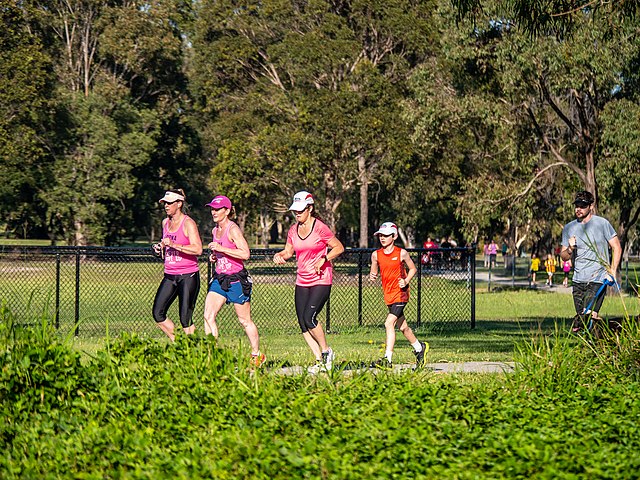![]()
אורי גולדבורט | רפואת ספורט | 09/04/2023
קשרים בין פעילות גופנית בשעות הפנאי ופעילות גופנית בעבודה לסיכויי התמותה

תקציר מחקר המסכם תוצאות של 17 מחקרים בנושא, כולל מחקר מישראל ששותף לו פרופ' אורי גולדבורט – עמית כבוד של הפקולטה לרפואה באוניברסיטת תל אביב ובעבר יושב ראש המועצה האקדמית העליונה של המכללה האקדמית בוינגייט בשנים 2013-2000.
רקע
מספר מחקרים הצביעו על "פרדוקס הפעילות הגופנית והבריאות": נמצא בהם כי פעילות גופנית בשעות הפנאי תורמת לבריאות ובכך מקטינה את שיעורי התמותה (מעלה את תוחלת החיים) ואילו לפעילות גופנית בעבודה לא נמצא אפקט כזה ובחלק מהמחקרים נמצא גם כי שיעור התמותה בתקופות המעקב במחקרים של אנשים שעבודתם כרוכה בפעילות גופנית היו גבוהים יותר מאשר אצל אלה שעבודתם היא "יושבנית", כלומר מבוצעת בעיקר בישיבה וכרוכה במעט מאד פעילות גופנית.
נמצא במחקרים כי אנשים ממעמד סוציו-אקונומי נמוך נוטים לבצע מעט פעילות גופנית בשעות הפנאי ולעומת זאת עבודתם שלהם כרוכה בדרך כלל ביותר פעילות גופנית משל אנשים ממעמדות סוציו-אקונומיים גבוהים. יכולת ההכללה ממחקרים אלה היא מוגבלת מכמה סיבות: הם בוצעו בעיקר במדינות במערב אירופה, כמות הפעילות הגופנית ועוצמתה בהם התבססה בעיקר על דיווחי הנחקרים ולא תמיד ניתן היה לבחון בהם את השפעת משתנים מתערבים היכולים להשפיע גם הם על התוצאות.
שיטת המחקר
במחקר הנוכחי ניסו להתגבר על חלק ממגבלות שהוזכרו למעלה בכך שנכללו בו תוצאות של 17 מחקרים ממדינות שונות שמחבריהם אפשרו גישה לנתונים האישיים של הנחקרים שמספרם הכולל היה 137,018. המדינות שבהן נערכו המחקרים: בלגיה, דנמרק, פינלנד, בריטניה, ישראל, גרמניה, שוודיה, ארה"ב, נורבגיה, ספרד ושוויץ.
הקריטריונים להכללת נבדקים בניתוח הנתונים היו:
א. הם היו בגיל העבודה, כלומר בני 18 עד 65. בקוהורט הישראלי רוב המשתתפים היו "עולים חדשים ובעיקר עולים ותיקים", לעולם לא היו בשרות צבאי וכחמישית מהם היו בעת השואה באירופה, כולל מספר מאות במחנות.
ב. היו לגביהם נתונים על: פעילות גופנית בעבודה, פעילות גופנית בשעות הפנאי ותמותה מכל סיבה שהיא.
כמו כן התבקשו החוקרים שמחקריהם נכללו בניתוח הנתונים לספק את הנתונים הבאים (אם היו להם כאלה) על הנבדקים במחקרים שלהם:
מצב סוציו-אקונומי (השכלה, סוג עבודה, רמת הכנסה).
נתונים על סיבת התמותה (תמותה ממחלות לב, סוג מחלת הלב).
נתונים על מצב בריאותי כמו משקל יחסי, כולל מידת ההשמנה (BMI, היקף מותניים, אחוז שומן), לחץ דם ויתר לחץ דם, נתונים המתקבלים מבדיקות דם (כולסטרול, ליפידים, סוכר), כושר אירובי, דיווח אישי על מצב בריאותי, מחלות נוספות (סרטן, סוכרת, מחלות ריאות, מחלות נפש).
נתונים דמוגרפיים – גיל, מין, מצב משפחתי, מוצא אתני. לא תמיד אזורי לידה שונים מייצגים הבדלים במוצא אתני. למשל, חלק משתתפי הסקר הישראלי היו ילידי רוסיה על כל גבולותיה ופולין.
נתונים הקשורים לאורח חיים – עישון, צריכת אלכוהול, הרגלי שינה, הרגלי תזונה, צריכת קפה, גורמים נוספים כמו דרך ההגעה לעבודה, מקום ביצוע הפעילות הגופנית וכדומה.
משתנים פסיכולוגיים – לחץ, עזרה סוציאלית, משתנים הקשורים ללחץ בעבודה (תמורה בלתי הולמת להשקעה בעבודה, לחץ בקבלת החלטות)
גורמים נוספים – שימוש בתרופות, הזדקקות לשירותי רפואה, נתוני סביבת המגורים.
תוצאות
כאמור, נכללו במטה אנליזות של המחקרים נתונים על 137,018 נחקרים. גילם הממוצע היה 44.4 שנים, BMI ממוצע 24.1 ק"ג/מ"ר ולחץ הדם הממוצע שלהם היה 129.4/78.9 מ"מ כספית. תקופות המעקב במחקרים נעו בין 7.7 ל-32.2 שנים.
נתונים נוספים על הנבדקים במחקרים
פעילות גופנית בעבודה: יושבנית – 30%, קלה - 32%, מתונה – 22%, גבוהה – 16%
פעילות גופנית בשעות הפנאי: יושבנית – 25%, קלה - 30%, מתונה – 25%, גבוהה – 16%
מצב סוציו-אקונומי: נמוך – 34%, בינוני – 41%, גבוה – 25%
מגדר: נשים – 38%, גברים – 62%
עישון: מעשנים – 34%, לא מעשנים – 66%
מצב משפחתי: בזוגיות –71%, לא בזוגיות – 29%
טבלאות 1, 2 ו-3 מביאות את נתוני סיכויי התמותה לגבי הגברים. טבלה מספר 1 מביאה את סיכויי התמותה כשהם מתקוננים רק לסוג השני של הפעילות הגופנית, כלומר נתוני הפעילות הגופנית בעבודה מתקוננים לפעילות גופנית בשעות הפנאי וההפך.
|
סוג פעילות גופנית
|
פעילות גופנית בעבודה
|
פעילות גופנית בשעות הפנאי
|
|
מספר נבדקים
|
סיכוי תמותה
|
מספר נבדקים
|
סיכוי תמותה
|
|
יושבנית
|
26,563
|
קבוצת ייחוס
|
19,735
|
קבוצת ייחוס
|
|
נמוכה
|
25,605
|
1.07
|
22,024
|
0.79
|
|
מתונה
|
16,495
|
1.14
|
19,053
|
0.70
|
|
גבוהה
|
15,600
|
1.17
|
17,993
|
0.70
|
טבלה מספר 2 מראה את סיכויי התמותה כשהם מתוקננים גם לגבי גיל, BMI ועישון.
|
סוג פעילות גופנית
|
פעילות גופנית בעבודה
|
פעילות גופנית בשעות הפנאי
|
|
מספר נבדקים
|
סיכוי תמותה
|
מספר נבדקים
|
סיכוי תמותה
|
|
יושבנית
|
25,193
|
קבוצת ייחוס
|
18.253
|
קבוצת ייחוס
|
|
נמוכה
|
25,278
|
1.07
|
21,187
|
0.87
|
|
מתונה
|
15,711
|
1.11
|
18,646
|
0.80
|
|
גבוהה
|
15,002
|
1.11
|
17,645
|
0.83
|
טבלה מספר 3 מראה את סיכויי התמותה כשהם מתקוננים בנוסף לגורמי התקנון בטבלאות 1 ו-2 גם לגבי מצב סוציו-אקונומי.
|
סוג פעילות גופנית
|
פעילות גופנית בעבודה
|
פעילות גופנית בשעות הפנאי
|
|
מספר נבדקים
|
סיכוי תמותה
|
מספר נבדקים
|
סיכוי תמותה
|
|
יושבנית
|
19,965
|
קבוצת ייחוס
|
15,880
|
קבוצת ייחוס
|
|
נמוכה
|
21,568
|
1.01
|
16,045
|
0.87
|
|
מתונה
|
13.223
|
1.02
|
16,404
|
0.83
|
|
גבוהה
|
13,827
|
0.97
|
16,607
|
0.85
|
טבלאות 4, 5 ו-6 מביאות את נתוני סיכויי התמותה לגבי הנשים. טבלה מספר 4 מביאה את סיכויי התמותה כשהם מתקוננים רק לסוג השני של הפעילות הגופנית, כלומר נתוני הפעילות הגופנית בעבודה מתקוננים לפעילות גופנית בשעות הפנאי וההפך.
|
סוג פעילות גופנית
|
פעילות גופנית בעבודה
|
פעילות גופנית בשעות הפנאי
|
|
מספר נבדקות
|
סיכוי תמותה
|
מספר נבדקות
|
סיכוי תמותה
|
|
יושבנית
|
12,417
|
קבוצת ייחוס
|
12,186
|
קבוצת ייחוס
|
|
נמוכה
|
17,849
|
1.05
|
12,829
|
0.75
|
|
מתונה
|
13,339
|
0.99
|
13,120
|
0.58
|
|
גבוהה
|
5,824
|
1.02
|
8,913
|
0.81
|
טבלה מספר 5 מראה את סיכויי התמותה כשהם מתוקננים גם לגבי גיל, BMI ועישון.
|
סוג פעילות גופנית
|
פעילות גופנית בעבודה
|
פעילות גופנית בשעות הפנאי
|
|
מספר נבדקות
|
סיכוי תמותה
|
מספר נבדקות
|
סיכוי תמותה
|
|
יושבנית
|
11,235
|
קבוצת ייחוס
|
10,320
|
קבוצת ייחוס
|
|
נמוכה
|
17,212
|
0.92
|
12,107
|
0.87
|
|
מתונה
|
12,628
|
0.92
|
12,902
|
0.76
|
|
גבוהה
|
5,601
|
0.94
|
8,796
|
0.90
|
טבלה מספר 6 מראה את סיכויי התמותה כשהם מתקוננים בנוסף לגורמי התקנון בטבלאות 4 ו-5 גם לגבי מצב סוציו-אקונומי.
|
סוג פעילות גופנית
|
פעילות גופנית בעבודה
|
פעילות גופנית בשעות הפנאי
|
|
מספר נבדקות
|
סיכוי תמותה
|
מספר נבדקות
|
סיכוי תמותה
|
|
יושבנית
|
9,958
|
קבוצת ייחוס
|
3,435
|
קבוצת ייחוס
|
|
נמוכה
|
15,872
|
0.91
|
3,409
|
0.81
|
|
מתונה
|
11,178
|
0.92
|
2,269
|
0.76
|
|
גבוהה
|
5,458
|
0.92
|
3,237
|
0.99
|
מספר דברים שאפשר להסיק מהנתונים שבטבלאות לגבי הקשרים בין פ"ג בעבודה והפ"ג בשעות הפנאי לשיעורי התמותה:
גברים
• כאשר הנתונים תוקננו רק לגבי פעילות גופנית בשעות הפנאי, נמצא סיכון מוגבר הדרגתי במידה מתונה לתמותה, כלומר ככל שהפ"ג המדווחת בעבודה הייתה קשה יותר, כך עלו מעט סיכויי התמותה (ראו בטבלה מספר 1).
• כאשר בוצע תקנון נוסף, לגבי גיל, BMI ועישון, האפקט של הפ"ג בעבודה על הגברת התמותה התמתן (ראו טבלה מספר 2).
• תקנון נוסף לגבי מצב סוציו-אקונומי, גרם לכך שלא נמצא יותר קשר בין פ"ג בעבודה ושיעורי התמותה (ראו טבלה מספר 3).
• פ"ג בשעות הפנאי נמצאה בקשר עם שיעורים נמוכים יותר של שיעורי התמותה. התקנונים השונים הראו מיתון של מגמה זו אך לא העלימו אותה (ראו בטבלאות 1, 2 ו-3).
נשים
• לא נמצא קשר בין פ"ג בעבודה ושיעורי התמותה כאשר התקנון היה רק לגבי פ"ג בשעות הפנאי (ראו בטבלה מספר 4).
• לאחר התקנונים נמצא כי פ"ג בעבודה אפילו קשורה לשיעורים נמוכים יותר של סיכויי התמותה, במיוחד בקרב הנשים מהמעמדות הסוציו-אקונומיים הנמוכים (ראו טבלה מספר 6).
• ללא תקנון, וגם אחרי התקנונים נמצא קשר בין פ"ג בשעות הפנאי ושיעורים נמוכים יותר של הסיכון לתמותה (ראו בטבלאות 4, 5 ו-6).
מנתונים נוספים, החוקרים מצאו לגבי הגברים את הדברים הבאים:
• לא נמצאו הבדלים במידת הקשרים בין פ"ג ושיעורי תמותה בין אלה שהיה להם לחץ דם תקין לבין אלה שהיו עם יתר לחץ דם.
• הקשרים היו חזקים יותר אצל בעלי משקל תקין לעומת אלה שהיו עם משקל יתר.
• הקשרים בין פ"ג וסיכויי התמותה היו חזקים יותר אצל אלה שבתחילת המעקב היו מאובחנים עם מחלת לב לעומת אלה שלא היה להם האבחון הזה.
• הקשרים בין פ"ג גופנית וסיכויי התמותה היו חזקים קצת יותר אצל בעלי הכושר הגופני הנמוך.
מהנתונים הנוספים, החוקרים מצאו לגבי הנשים את הדברים הבאים:
• לא נמצאו הבדלים במידת הקשרים בין פ"ג ושיעורי תמותה בין אלה שהיה להן לחץ דם תקין לבין אלה שהיו עם יתר לחץ דם.
• הקשרים בין פ"ג וסיכויי התמותה היו חזקים יותר אצל מדווחות בעלות משקל תקין לעומת אלה שהיו עם משקל יתר.
• הקשרים בין פ"ג וסיכויי התמותה היו חזקים יותר אצל אלה שבתחילת המעקב היו מאובחנות עם מחלת לב לעומת אלה שלא אובחנו עם מחלת לב.
מקורות
המאמר המקורי המסכם את 17 המחקרים:
The association of occupational and leisure-time physical activity with all-cause mortality – results from the Active Worker individual participant data meta-analysis on n=137,018 participants.
Core team
Pieter Coenen1, Maaike A. Huysmans1, Andreas Holtermann2, Richard Troiano3, Paul Jarle Mork4, Steinar Krokstad4, Els Clays5, Willem van Mechelen1, Allard J. van der Beek1
1 Amsterdam UMC, Vrije Universiteit Amsterdam, Department of Public and Occupational Health, Amsterdam Public Health Research Institute, Amsterdam, The Netherlands
2 National Research Centre for the Working Environment, Copenhagen, Denmark
3 Risk Factor Assessment Branch, Division of Cancer Control and Population Sciences, National Cancer Institute, Rockville, USA.
4 Department of Public Health and Nursing, Norwegian University of Science and Technology, Trondheim, Norway.
5 Department of Public Health, Ghent University, Ghent, Belgium.
Collaborators
• Belgian Physical Fitness Study. (BELFIT) Els Clays & Dirk Debacquer
• Health 2006 (H2006). Mette Aadahl & Betina Heinsbæk Thuesen
• MONICA Denmark. Anette Sjøl & Lars Bo Andersen
• Kuopio Ischemic Heart Disease Risk Factor Study (KIHD). Jussi Kauhanen & Ari Voutilainen
• Whitehall II study. Richard Pulsford & Emmanuel Stamatakis
• Israel Ischemic Heart Disease Study (IIHDS). Uri Goldbourt
• MONICA/KORA Augsburg. Anette Peters & Barbara Thorand
• Primary Prevention Study. Annika Rosengren & Lena Björck
• National Health and Nutrition Examination Survey (NHANES). Richard Troiano & Kyle Sprow
• Nord-Trøndelag Health Study (HUNT). Steinar Krokstad & Paul Jarle Mork
• Uppsala Longitudinal Study of Adult Men (ULSAM). Kristin Franzon
• European Prospective Investigation into Cancer and Nutrition - Spain study (EPIC Spain). María José Sánchez Pérez & Antonio Agudo
• WOLF study. Anders Knutsson & Lars Alfredsson
• Study of Health in Pomerania (SHIP). Marcus Dörr & Henry Völzke
• CARdio-vascular Disease, Living and Ageing in Halle (CARLA) study. Alexander Kluttig & Johannes Haerting
• The Swiss WHO MONItoring of trends and determinants in CArdiovscular disease (MONICA) study and National Research Program (NRP) 1A. Miriam Wanner & Matthias Bopp
• Consultants Jos Twisk & Niklas Krause
References
1 Lee IM, Shiroma EJ, Lobelo F et al. Effect of physical inactivity on major non-communicable diseases worldwide: an analysis of burden of disease and life expectancy. Lancet 2012;380 (9838):219-229
2 Sallis JF, Owen N, Fisher EB. Ecological models of health behavior. In: Glanz K, Rimer BK, Viswanath K (eds.) Health behavior and health education: theory, research, and practice, San Francisco, CA: Jossey-Bass 2008;465– 482.
3 World Health Organization. Global recommendations on physical activity for health, Geneva, Switzerland: World Health Organization 2010.
4 Mackenbach JP, Kulhánová I, Artnik B et al. Changes in mortality inequalities over two decades: register based study of European countries. BMJ 2016;353:i1732
5 Li J, Loerbroks A, Angerer P. Physical activity and risk of cardiovascular disease: what does the new epidemiological evidence show? Current Opinion in Cardiology 2013;28 (5):575-583
6 Holtermann A, Hansen JV, Burr H, Søgaard K, Sjøgaard G. The health paradox of occupational and leisure-time physical activity. British Journal of Sports Medicine 2012;46 (4):291-295
7 Hu GC, Chien KL, Hsieh SF, Chen CY, Tsai WH, Su TC. Occupational versus leisure-time physical activity in reducing cardiovascular risks and mortality among ethnic Chinese adults in Taiwan. Asia-Pacific Journal of Public Health 2014;26 (6):604-613
8 Krause N, Brand RJ, Arah OA, Kauhanen J. Occupational physical activity and 20-year incidence of acute myocardial infarction: results from the Kuopio Ischemic Heart Disease Risk Factor Study. Scandinavian Journal of Work Environement & Health 2015;41 (2):124-139
9 Gupta N, Dencker-Larsen S, Lund Rasmussen C et al. The physical activity paradox revisited: a prospective study on compositional accelerometer data and long-term sickness absence. International Journal of Behavioral Nutrition and Physical Activity 2020;17 (1):93
10 Clays E, Lidegaard M, De Bacquer D et al. The combined relationship of occupational and leisure-time physical activity with all-cause mortality among men, accounting for physical fitness. American Journal of Epidemiology 2014;179 (5):559-566
11 Harari G, Green MS, Zelber-Sagi S. Combined association of occupational and leisure-time physical activity with all-cause and coronary heart disease mortality among a cohort of men followed-up for 22 years. Occupational and Environmental Medicine 2015;72 (9):617-624
12 Holtermann A, Krause N, van der Beek AJ, Straker L. The physical activity paradox: six reasons why occupational physical activity (OPA) does not confer the cardiovascular health benefits that leisure time physical activity does. British Journal of Sports Medicine 2017;52 (3):149-150
13 Coenen P, Huysmans MA, Holtermann A et al. Do highly physically active workers die early? A systematic review with meta-analysis of data from 193 696 participants. British Journal of Sports Medicine 2018;52 (20):1320-1326
14 Rana B, Hu L, Harper A et al. Occupational physical activity and lung cancer risk: a systematic review and metaanalysis. Sports Medicine 2020;https://doi.org/10.1007/s40279-020-01312-w
15 Cillekens B, Lang M, van Mechelen W et al. How does occupational physical activity influence health: an umbrella review covering 23 health outcomes and 158 studies. Under review
16 van Dommelen P, Coffeng JK, van der Ploeg HP, van der Beek AJ, Boot CR, Hendriksen IJ. Objectively Measured Total and Occupational Sedentary Time in Three Work Settings. PLoS One 2016;11 (3):e0149951
17 Beenackers MA, Kamphuis CB, Giskes K et al. Socioeconomic inequalities in occupational, leisure-time, and transport related physical activity among European adults: A systematic review. International Journal of Behavioral Nutrition and Physical Activity 2012;19:9:116
18 Shephard RJ. Is there a 'recent occupational paradox' where highly active physically active workers die early? Or are there failures in some study methods? Br J Sports Med 2019 10.1136/bjsports-2018-100344
19 Berlin JA, Santanna J, Schmid CH, Szczech LA, Feldman HI. Individual patient- versus group-level data meta-regressions for the investigation of treatment effect modifiers: ecological bias rears its ugly head. Statistics in Medicine 2002;21 (3):371–387
20 Cochrane Individual Participant Data (IPD) Meta-analysis Methods Group. http://ipdmamg.cochrane.org/.
21 Riley RD, Lambert PC, Abo-Zaid G. Meta-analysis of individual participant data: rationale, conduct, and reporting. BMJ 2010;340:c221
22 Coenen P, Huysmans MA, Holtermann A et al. Can socioeconomic health differences be explained by physical activity at work and during leisure time? Rationale and protocol of the active worker individual participant meta-analysis. BMJ Open 2018;8 (10):e023379
23 Coenen P, Huysmans MA, Holtermann A et al. Can socio-economic health differences be explained by physical activity? The active worker consortium; an individual participant meta-analysis. Prospero 2018;CRD42018085228
24 Stewart LA, Clarke M, Rovers M et al. Preferred Reporting Items for Systematic Review and Meta-Analyses of individual participant data: the PRISMA-IPD Statement. JAMA 2015;313 (16):1657-65
25 Buffart LM, Kalter J, Chinapaw MJ et al. Predicting OptimaL cAncer RehabIlitation and Supportive care (POLARIS): rationale and design for meta-analyses of individual patient data of randomized controlled trials that evaluate the effect of physical activity and psychosocial interventions on health-related quality of life in cancer survivors. Systematic Reviews 2013;13:2:75
26 Tremblay MS, Colley RC, Saunders TJ, Healy GN, Owen N. Physiological and health implications of a sedentary lifestyle. Applied Physiology, Nutrition, and Metabolism 2010;35 (6):725-740
27 van Lenthe FJ, Schrijvers CT, Droomers M, Joung IM, Louwman MJ, Mackenbach JP. Investigating explanations of socio-economic inequalities in health: the Dutch GLOBE study. European Journal of Public Health 2004;14 (1):63-70
28 Rosengren A, Wilhelmsen L. Physical activity protects against coronary death and deaths from all causes in middle-aged men. Evidence from a 20-year follow-up of the primary prevention study in Goteborg. Annals of Epidemiology 1997;7 (1):69-75
29 World Health Organization. Hypertension, Geneva, Switzerland.
30 World Health Organization. Obesity, Geneva, Switzerland.
31 Shvartz E, Reibold RC. Aerobic fitness norms for males and females aged 6 to 75 years: a review. Aviationa, Space and Environmental Medicine 1990;61 (1):3-11
32 Hayden JA, van der Windt DA, Cartwright JL, Cote P, Bombardier C. Assessing bias in studies of prognostic factors. Annals of Internal Medicine 2013;158 (4):280-286
33 Richard A, Martin B, Wanner M, Eichholzer M, Rohrmann S. Effects of leisure-time and occupational physical activity on total mortality risk in NHANES III according to sex, ethnicity, central obesity, and age. Journal of Physical Activity & Health 2015;12 (2):184-192
34 Saidj M, Jørgensen T, Jacobsen RK, Linneberg A, Aadahl M. Differential cross-sectional associations of work- and leisure-time sitting, with cardiorespiratory and muscular fitness among working adults. Scandinavian Journal of Work, Environment and Health 2014;40 (5):531-538
35 Sjøl A, Thomsen KK, Schroll M, Andersen LB. Secular trends in acute myocardial infarction in relation to physical activity in the general Danish population. Scandinavian Journal of Medicine & Science in Sports 2003;13 (4):224-230
36 Krause N, Arah OA, Kauhanen J. Physical activity and 22-year all-cause and coronary heart disease mortality. American Journal of Industrial Medicine 2017;60 (11):976-990
37 Pulsford RM, Stamatakis E, Britton AR, Brunner EJ, Hillsdon M. Associations of sitting behaviours with all-cause mortality over a 16-year follow-up: the Whitehall II study. . International Journal of Epidemiology 2015;44 (6):1909-1916
38 Eaton CB, Medalie JH, Flocke SA, Zyzanski SJ, Yaari S, Goldbourt U. Self-reported physical activity predicts long-term coronary heart disease and all-cause mortalities. Twenty-one-year follow-up of the Israeli Ischemic Heart Disease Study. Archives of Family Medicine 1995;4 (4):323-329
39 Autenrieth CS, Baumert J, Baumeister SE et al. Association between domains of physical activity and all-cause, cardiovascular and cancer mortality. European Journal of Epidemiology 2011;26 (2):91-99
40 Moe B, Mork PJ, Holtermann A, Nilsen TI. Occupational physical activity, metabolic syndrome and risk of death from all causes and cardiovascular disease in the HUNT 2 cohort study. Occupational and Environmental Medicine 2013;70 (2):86-90
41 Franzon K, Zethelius B, Cederholm T, Kilander L. Modifiable midlife risk factors, independent aging, and survival in older men: report on long-term follow-up of the Uppsala Longitudinal Study of Adult Men cohort. Journal of the American Geriatrics Society 2015;63 (5):877-885
42 Huerta JM, Chirlaque MD, Tormo MJ et al. Work, household, and leisure-time physical activity and risk of mortality in the EPIC-Spain cohort. Preventive Medicine 2016;85:106-112
43 Johnsen AM, Alfredsson L, Knutsson A, Westerholm PJ, Fransson EI. Association between occupational physical activity and myocardial infarction: a prospective cohort study. BMJ Open 2016;6 (10):e012692
44 Bahls M, Groß S, Baumeister SE et al. Association of domain-specific physical activity and cardiorespiratory fitness with all-cause and cause-specific mortality in two population-based cohort studies. Scientific Reports 2018;8 (1):16066
45 Wanner M, Tarnutzer S, Martin BW et al. Impact of different domains of physical activity on cause-specific mortality: a longitudinal study. Preventive Medicine 2014;62:89-95
יש לך שאלה למומחים של המרכז האקדמי לוינסקי-וינגייט (קמפוס וינגייט)? אין צורך להתבייש, רק ללחוץ כאן.

.png)





.jpg)
.jpg)


 יום פתוח - יום שני 30.5.2022 בשעה 16:30 - תואר ראשון, שני, הסבת אקדמאים ומכינה
יום פתוח - יום שני 30.5.2022 בשעה 16:30 - תואר ראשון, שני, הסבת אקדמאים ומכינה
